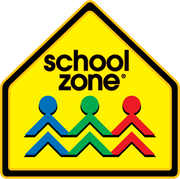Are you trying to get some uninterrupted housework or bill-paying done without constant interruption? Maybe you are feeling kids need to get off their devices for awhile, but a big outing isn’t in the cards.
With a bit of thought, creativity, and prompting, kids can practice skills—even multiple skills at the same time—without much time or effort on your part, especially preschoolers, kindergartners, and first graders. We sometimes forget, for example, that learning and practicing colors, shapes, letters, and numbers can be incorporated into everyday stuff. So can micro lessons in history, science, and social studies. Try one or more of these 10 “unplugged” learning activities the next time you hear, “Mommy, I’m bored.”
-
All Things Blue
Ask: Which color is your favorite? Find three things that are that color. Draw a picture of them on a notepad with your favorite color marker. -
Do the Opposite
Ask: Can you think of opposite ways to move your body? Walk across the room or yard in giant steps. Walk back with teeny-tiny steps. Tiptoe as quietly as you can. Then stamp loudly! What other opposites can you think of? -
Modern Living
Ask: Look around our house. What do you see that would not have been in a house long ago? Would people have used something else instead? What would they have used? -
Shape Exhibit
Suggest: Go on a shape search. Look around for objects that are square, round, triangular, rectangular. Sort the objects into four groups. -
Alphabet Walk
Suggest or Share: Take an alphabet walk around the house (or together, the neighborhood). Look for objects that begin with specific letters. Or you and your child can take turns choosing a letter. After your child discovers an object whose name begins with the letter, praise his or her efforts before selecting the next letter. For an added challenge, keep score to see who finds the most matches of object names with their beginning letters. -
Alphabet Soup
Share: Make alphabet soup with your child. Place alphabet letters in a large pot or bowl (use magnetic letters or cutout letters from sturdy cardboard). Have your child pick a letter without looking. Then ask him or her to say the letter, or for an extra challenge, to name objects that begin with that letter sound. -
Numbers All Around
Suggest: Find numbers up to 100 at home, at a store, in an online news story or newspaper, or in a book. Have your child say the number and perhaps write it in a tablet. You might ask how the number is used. Expand the experience with numbers by asking to find numbers to 999. -
Everything Sam Can Do
Request: Tell me everything Sam can do. (Or use your child’s name.) Use this sentence pattern: Sam can _____ with his _____. You might say, for example, Sam can feel raindrops with his hand. -
Shoe Count
Request: Ask your child to guess how many pairs of shoes they have. (Then count to check their estimate.) Practice estimating bananas in a bunch, cans of food in the shopping cart, or buttons on a shirt. -
Living and Non-Living
Share: Take a walk outside and point out trees, rocks, a swing, etc. Ask your child to identify which are living and which are non-living. If you don’t have pets, try this activity at a zoo or pet store. Then ask your child to describe how living things are different from non-living things.
Take a look around, and load a little learning into everyday moments with ease.












